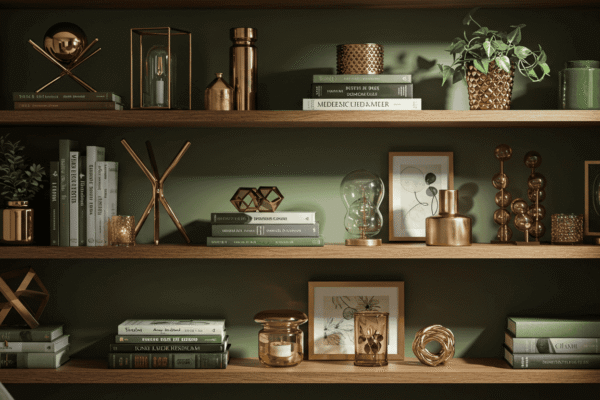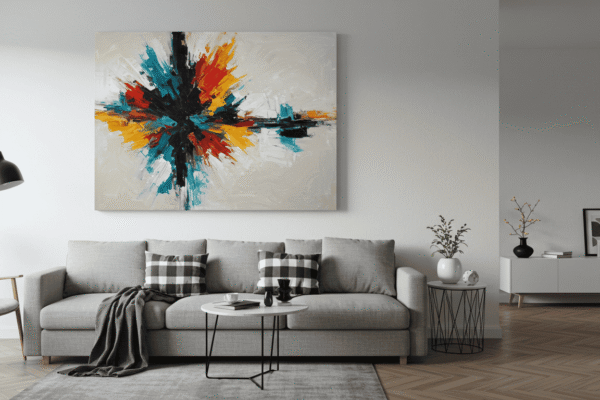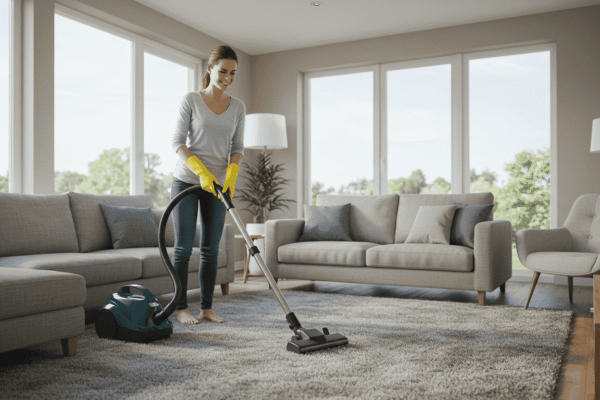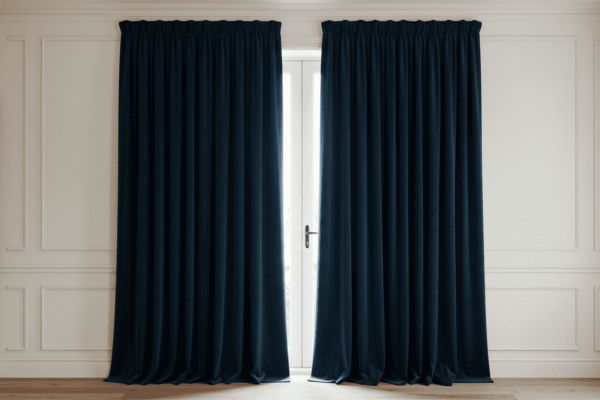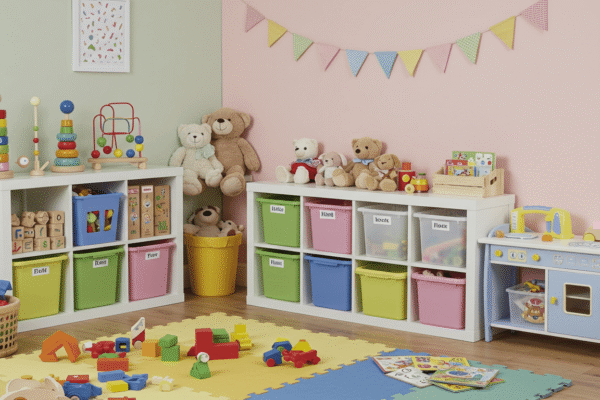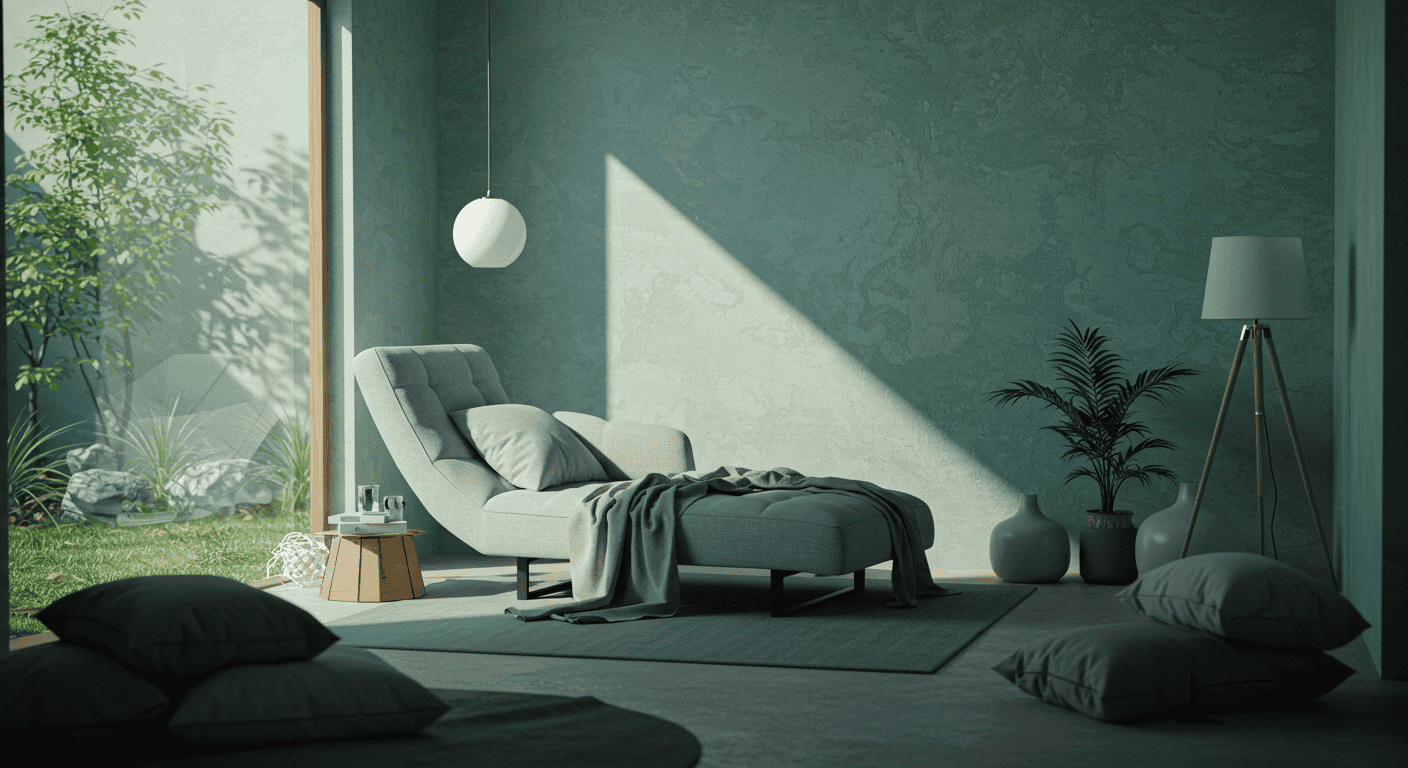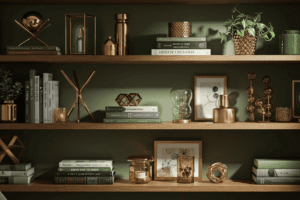Welcome to a calm-centered design guide that treats rest as a core function of the home, an approach that reimagines every corner, corridor, and cozy alcove as an invitation to pause. This article weaves practical design, sensory science, and creative layout ideas into a single, reader-friendly roadmap for crafting Homes Built for Napping. Expect hands-on tips, season-ready strategies, and room-by-room solutions that help build quiet, dim, comfortably cool micro-sanctuaries without major renovations. To make skimming effortless, useful tables are included throughout, along with simple checklists and planners that transform big concepts into easy next steps. For more home strategies, visit the hub at Amelia’s Tips, and reference evidence-based sleep basics from a trusted resource like the Sleep Foundation when deeper sleep science is helpful. As these ideas are applied, the entire home will begin to feel like a thoughtful system dedicated to everyday renewal, truly Homes Built for Napping.
Creating the Perfect Nap Nook
The heart of Homes Built for Napping is a small, intentionally crafted nook, a quiet, semi-enclosed place that gets dim when needed, stays cool, and supports healthy posture while lounging. Before buying anything new, map how sound and footsteps move through the home throughout the day. A successful nook sits away from the harshest noises, distracting sightlines, and temperature swings. Treat the nook like a micro-room, it needs privacy without isolation, comfort without clutter, and convenience without bright glowing screens or fussy controls. Whether carved from a window seat, a landing, or a spare room corner, the best nap nook trades excess furniture for layered textiles, soft edges, and adjustable light, all anchors of Homes Built for Napping.
Location and Foot-Traffic Mapping
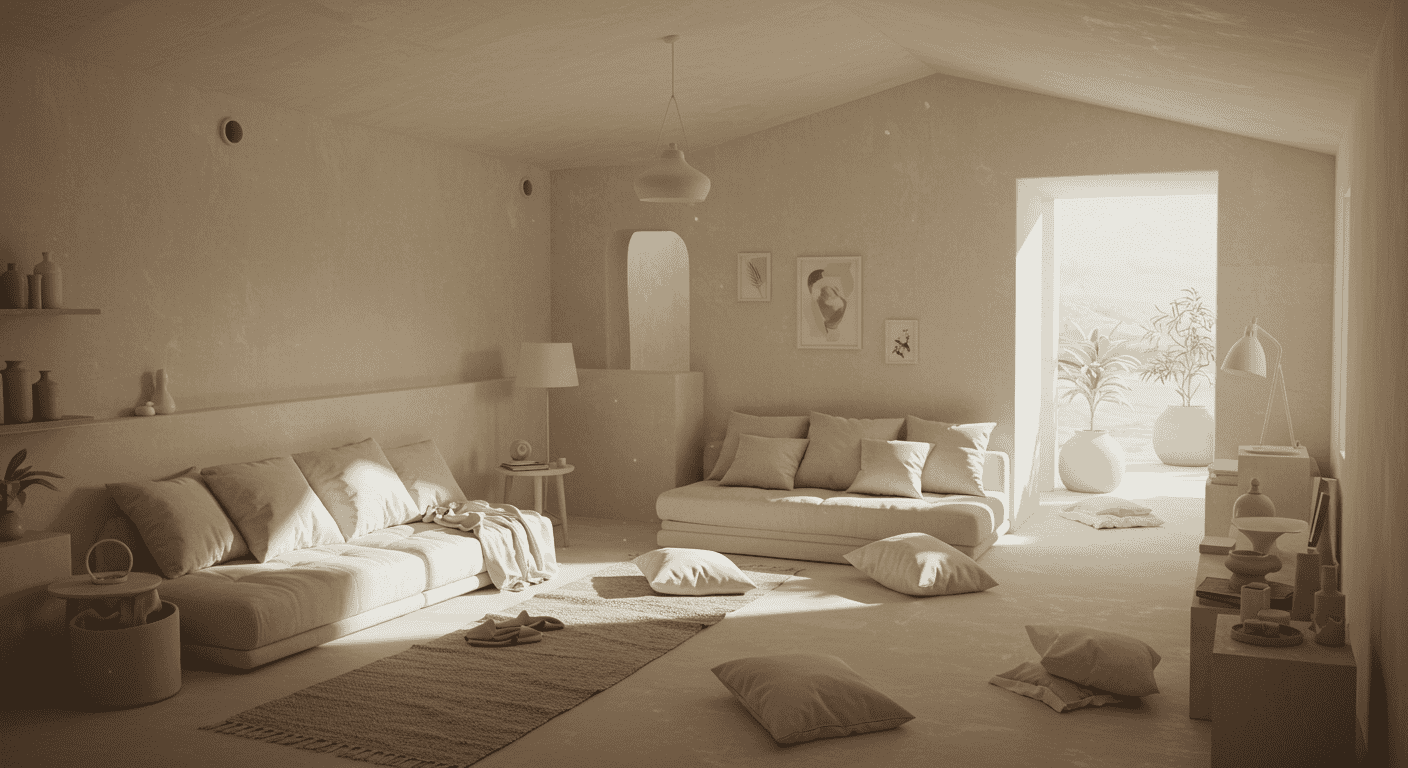
Start with a simple noise-and-traffic audit. Walk the home morning, afternoon, and evening to note recurring patterns such as busy corridors, doors that slam, humming appliances, and conversations that bleed through. Pick a nook location that places a wall between the sleeper and the dominant noise source whenever possible. Add distance from attention-grabbing sightlines, a direct view of the TV or an open entryway will subconsciously pull focus. In a small space, even a one-meter shift can matter. A bookcase, curtain panel, or freestanding screen can re-route traffic and visually cue quiet mode, a hallmark of Homes Built for Napping.
Sightlines, Privacy, and Enclosure
A nap nook thrives on visual calm, gentle edges, low-contrast tones, and just enough enclosure to soften awareness of the wider room. Think partial enclosure rather than full walls, layered curtains, tall plants, or shelving that doubles as storage. Shorter sightlines lower cognitive load, which in turn reduces alertness and invites rest. Keep lighting controls within arm’s reach and avoid bright indicator LEDs in the direct line of sight. The more the nook feels self-contained, the more it supports the ethos behind Homes Built for Napping.
Small-Space Strategies
Small homes can still support magnificent naps. Consider under-stairs alcoves with a cushion-topped platform, window benches with deep seats and layered pillows, or a convertible daybed that quickly shifts from reading postures to reclined rest. In micro-apartments, think vertically by adding an upper shelf for books and soft storage to keep the main surfaces visually clean. Use neutral textiles to blur the edges of small areas, creating an impression of calm expansion. This is where Homes Built for Napping is most creative, simple elements arranged with intention.
Micro-Layouts for Studios and Bedrooms
In a studio, position the nook so the back is to the main living zone, which eases the mind and limits scanning. Use a narrow side table within easy reach of the dominant hand to minimize movement and drop arousal. In a bedroom, place the nook perpendicular to windows to ease glare and promote soft ambient light, then add a curtain panel that crosses in front of the nook’s entry line to create a threshold ritual. Keep charging cables hidden but accessible and choose rounded corners to reduce the chance of bumps when groggy, tiny touches that keep Homes Built for Napping practical.
| Area | Noise Source | Time of Day | Mitigation |
|---|---|---|---|
| Bedroom corner | Corridor voices | Evening | Curtain partition, thick rug runner, soft-close latch |
| Living room alcove | TV and conversation | Night | Sheer plus blackout layers, freestanding screen, door sweep |
| Stair landing | Footfalls on treads | Morning | Tread cushioning, felt pads, low-level sound masking |
Light Control for Daytime Sleep
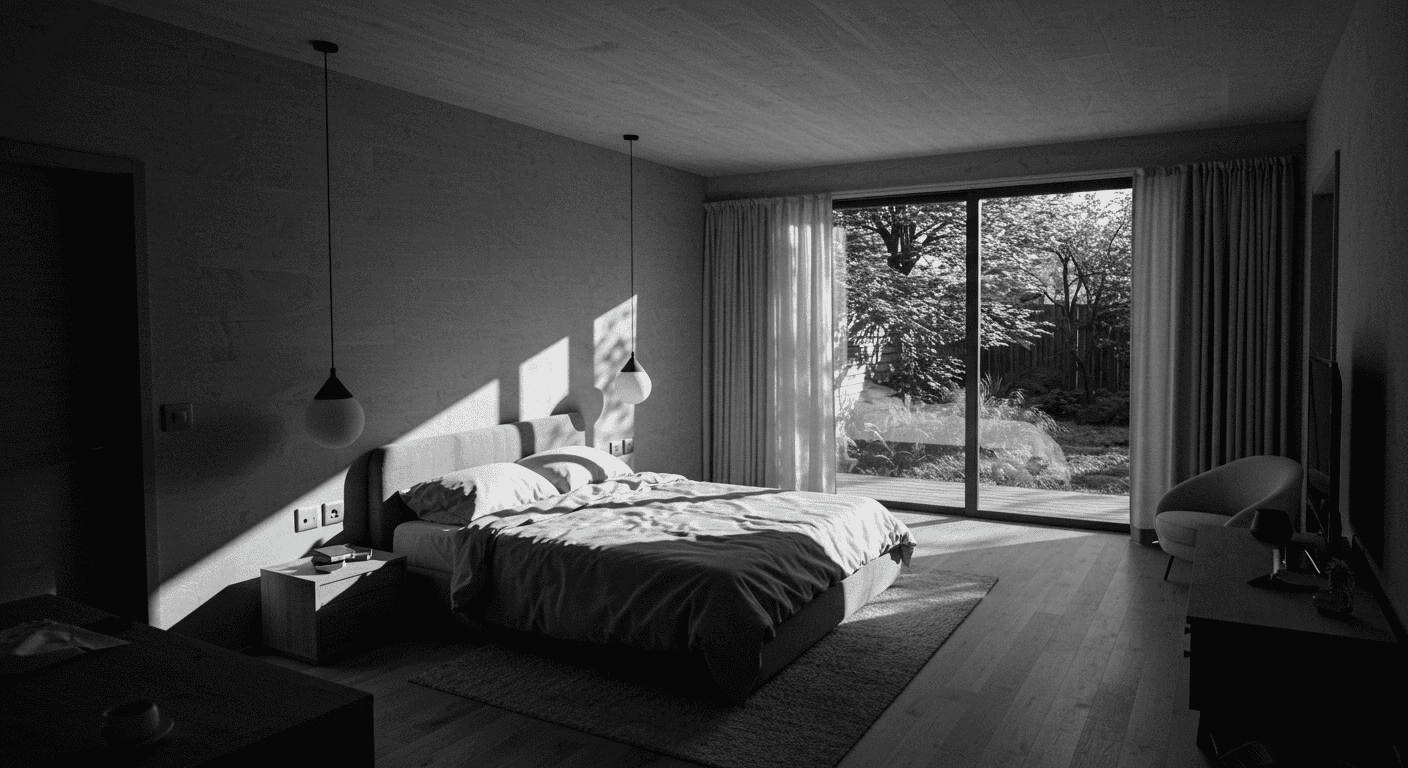
Light is the strongest cue that keeps the brain alert, which is why daytime naps often fail in bright rooms. The solution is thoughtful layering, soft sheers to tame glare and maintain rhythm, plus an opaque layer to create near-darkness on demand. In the spirit of Homes Built for Napping, aim for flexibility and turn down the visual volume gradually so the transition into rest feels smooth rather than abrupt. Warm, low-intensity lighting supports relaxation further, as do shades that seal edge leaks where stray beams sneak in.
Sheer vs. Blackout Layering
Sheers are ideal for diffusing harsh daylight without fully disconnecting from time-of-day cues, making them excellent for pre-nap wind-down. Blackout layers are for the decisive sleep now moment, best when the aim is a deeper 20 to 40 minute nap or when outdoor brightness is overwhelming. Layer both on a double track so each can operate independently. That level of control is a signature move in Homes Built for Napping, allowing a room to surf the full spectrum from open and airy to cave-like calm.
Dimmers and Warm LEDs at 2700K–3000K
Keep fixed lighting warm and dimmable. Warm color temperatures around 2700K to 3000K signal evening mood and ease the transition into rest. If reading is part of the ritual, use targeted, low-glare task light positioned behind or above the shoulder. Supplement with low-level accent lighting that guides movement without spiking alertness. Discreet, tactile switches close to the seated or reclined position limit the need to get up, supporting the gentle rituals that define Homes Built for Napping.
Glare Management and Window Orientation
Glare sabotages naps by forcing squinting and micro-adjustments in posture. Align lounging positions perpendicular to primary window beams and use side-to-side layering to catch low-angle light, especially from east- or west-facing windows. Mind reflective surfaces such as glass-front cabinets, glossy frames, and polished metal, and place them out of the sightline or reduce their sheen. Smart light control equals comfort, and comfort is the currency of Homes Built for Napping.
| Problem | Day Fix | Night Fix | Notes |
|---|---|---|---|
| Morning glare | Sheers, reposition cushion | Blackout layer plus side seals | East windows strongest after sunrise |
| Street lights | Interior curtains mid-level | Edge light-blocking tape | Check for gaps at top and floor |
| Screen reflections | Matte surfaces, re-aim task light | Use dim warm lamp | Hide indicator LEDs with covers |
Acoustic Comfort Explained (STC, NRC, CAC)

Sound is the stealth disruptor. Two concepts guide nap-friendly acoustics, absorption to tame echoes inside the room and blocking to stop noise from entering. Absorption is often represented by NRC, while blocking performance is captured by STC. In open-plan homes, ceiling systems can be relevant too, where CAC helps control sound leaking over partitions. A steady, low-level sound such as a fan can gently mask irregular noises. Combining these principles is central to Homes Built for Napping.
NRC for In-Room Echo Control
When a room echoes, small sounds feel sharper and more intrusive. Softer materials like plush rugs, upholstered panels, heavy curtains, and soft wallcoverings absorb sound so the room feels hushed. Place absorption near reflective surfaces, opposite parallel walls, large windows, or under high ceilings. No need to overdo it, a balanced approach retains lively warmth without splashy resonances. Softer rooms invite calmer breathing and a quicker slide into nap mode, which is the goal of Homes Built for Napping.
STC for Blocking Adjacent Noise
Blocking requires mass and airtightness. Consider solid-core doors, well-fitted seals, and attention to flanking paths like gaps under doors and around casings. Even small changes such as door sweeps, weatherstripping, and gaskets can yield meaningful improvements. If a wall adjoins a TV room or stairwell, adding mass layers or decoupling surfaces where feasible can help. Effective blocking lowers the number of startles during rest, a key performance indicator within Homes Built for Napping.
CAC for Over-the-Partition Leaks
In multi-room or office-like layouts, noise can hop the wall via shared ceilings or plenums. Address this with ceiling components that boost CAC and seal penetrations above partitions. Combine with targeted absorption in the nook to calm what does arrive. The result is a smooth acoustic floor, free from sudden spikes, that typifies the best Homes Built for Napping.
Typical NRC and STC Ranges in Homes
As a simple, non-technical guide, soft furnishings often contribute low to mid NRC improvements, while improved interior doors and layered walls can push STC performance into noticeably quieter territory. The precise numbers matter less than consistent sealing and well-placed softness. The goal is an audible shift toward calm, a foundational standard in Homes Built for Napping.
| Metric | What It Measures | Typical Range | Best Use |
|---|---|---|---|
| NRC | Absorption within the room | Low to mid values | Reduce echo in the nook |
| STC | Blocking through walls and doors | 30–55+ | Keep outside noises out |
| CAC | Blocking over shared ceilings | 25–50+ | Limit over-the-wall leaks |
Thermal Comfort and Airflow
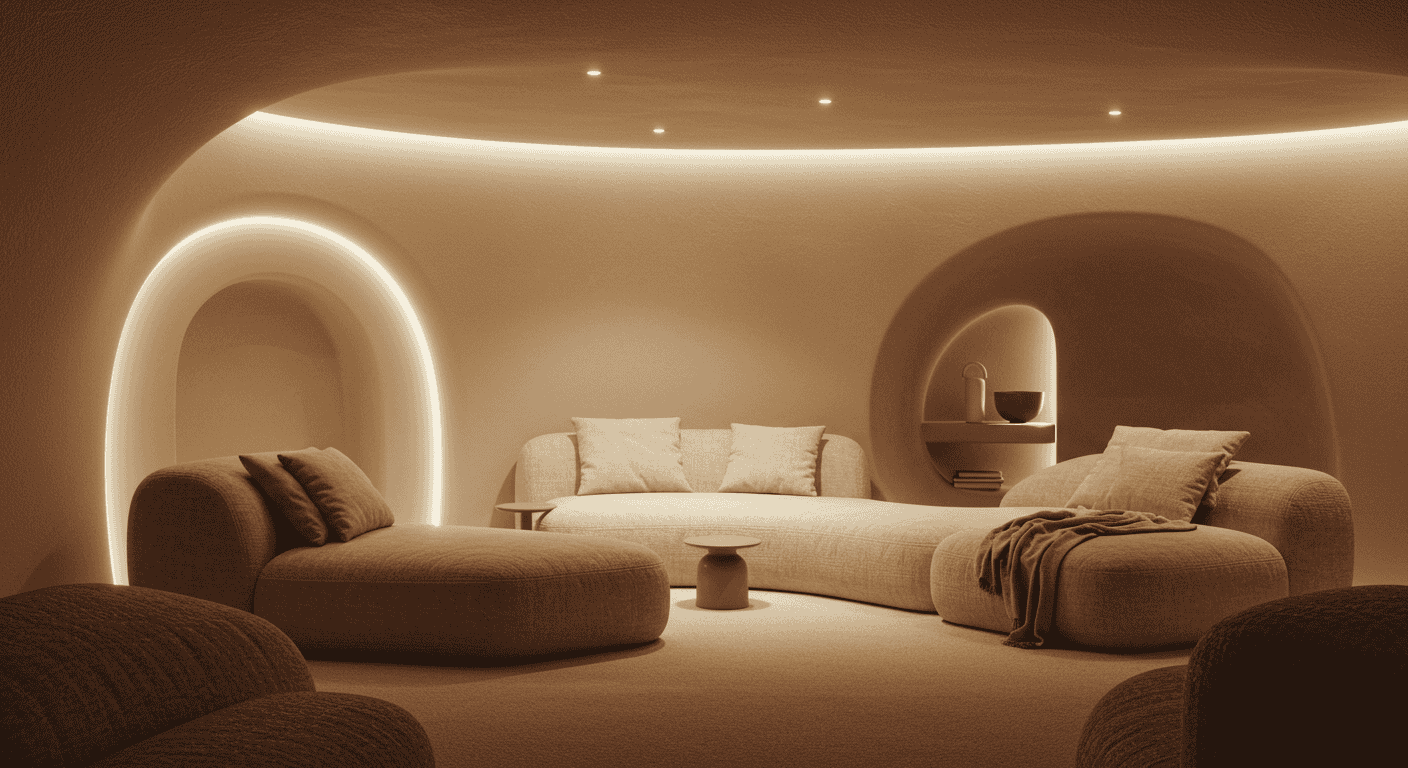
Temperature is the body’s second language for sleep. Cooler-than-daytime settings tend to facilitate napping by encouraging a subtle drop in core temperature. Air movement further enhances comfort, but uncontrolled drafts can be distracting. The solution is gentle, adjustable airflow paired with breathable textiles. For true Homes Built for Napping, seasonal swaps keep the nook aligned with weather shifts while maintaining a consistent nap ritual year-round.
Ideal Nap Temperature and Quick Tweaks
Aim for a slightly cool zone relative to the rest of the home, then let textiles do the fine-tuning. A light throw is faster to adjust than a thermostat and less disruptive to others. For shared spaces, think microclimate by positioning the lounger away from direct vents and using low-speed fan settings to avoid chilly spots. Temperature comfort that’s easy to adjust without standing up supports seamless naps and fits the ethos of Homes Built for Napping.
Fans, Cross-Breezes, and Draft Control
If relying on natural ventilation, position the nook where cross-breezes pass by, not through, the resting body. In warm months, a ceiling or pedestal fan on low introduces a consistent whoosh that doubles as sound masking. In cold months, switch fan direction to gently recirculate warm air without direct draft. Control is the constant, the calmer the adjustments, the stronger the association with rest in Homes Built for Napping.
Textiles and Layering for Seasonal Shifts
Textiles are the thermostat of a nook. In summer, breathable weaves and light layers regulate humidity and reduce clammy skin sensation. In winter, denser throws and layered rugs cut radiant chill from nearby surfaces. Layering also supports preference differences among household members. Fast, tactile adjustments keep the ritual elegant, a defining trait of Homes Built for Napping.
| Season | Problem | Adjustment | Textile Swap |
|---|---|---|---|
| Summer | Overheating | Maximize cross-breeze, shade windows | Breathable coverlet, airy cushion covers |
| Autumn | Variable temps | Add lightweight throw, dim earlier | Soft knit throw, midweight rug |
| Winter | Chilly drafts | Seal gaps, add lining, lower fan speed | Dense wool throw, layered rug pads |
| Spring | Allergens and pollen | Rinse screens, purify air, wash textiles | Washable covers, low-pile rug |
Sleeping Porch or Indoor Vibe
A classic sleeping porch captures breezes, filters daylight, and wraps rest in gentle outdoor cues, an iconic motif that can be adapted indoors. When a porch isn’t practical, mimic the vibe with light-permeable screening, motion-friendly curtains, and layered textures that suggest fresh air and easy lounging. The goal is to translate the romance of open-air rest into the reliable comfort of interior spaces, all aligned with Homes Built for Napping.
What Makes a Sleeping Porch Work
The porch excels because it balances airflow with security and screens the view just enough to soften the mind. Elevated locations reduce ground-level noise, while surrounding foliage filters light into a shifting, restful pattern. Furniture is scaled for lounging and fabrics are durable yet soft. The appeal isn’t just visual, it’s sensory design at its best, the same design language that powers Homes Built for Napping.
Indoor Mimic, Screening, Curtains, Airflow Patterns
Indoors, use lightweight curtains on ceiling tracks to create flexible zones and softened edges. Position the nook where air moves alongside rather than directly at the body, and introduce subtle scents that evoke fresh, open spaces. Emphasize tactile materials underfoot and at the touchpoints of elbows and neck. The result is a cozy enclave with the spirit of outdoors, nested safely inside, quintessential Homes Built for Napping.
Safety, Weather, and Pollen Considerations
For real porches, consider secure railings, stable furniture with rounded corners, and weather-ready textiles. Seasonal pollen can irritate airways, rinsing screens, laundering covers, and using purification during peak periods help. Even an indoor mimic benefits from routine freshening, ventilate briefly, then restore the cozy envelope. These small rituals keep the porch-inspired nook aligned with the long-view philosophy of Homes Built for Napping.
| Feature | Benefit | Setup Tip | Maintenance |
|---|---|---|---|
| Screens | Airflow plus bug control | Choose tight mesh, seal edges | Rinse seasonally, check for tears |
| Curtains | Privacy and dimming | Use double track for layers | Wash quarterly, lint-roll dust |
| Rugs | Softness and sound control | Use rug pad for stability | Vacuum routinely, rotate seasonally |
Furniture, Textiles, and Layout
Furniture for naps sits between lounging and sleeping. Daybeds, chaises, built-in benches, and deep window seats are ideal because they support semi-reclined positions and quick posture shifts. Pair seating with a low, stable side table for water and a place to stow devices during rest. Textiles do the rest, layered pillows that support neck and knees, breathable covers, and soft throws. This tactile orchestration is the essence of Homes Built for Napping.
Seating Types and Cushion Sizing
Aim for a cushion depth that allows both upright reading and a gentle sprawl. If using a built-in, plan a supportive base plus a topper that balances softness and structure. Curved edges help prevent pressure points. For taller loungers, add a bolster to support the knees and a mid-back pillow to maintain a neutral spine, all in service of sustainable rest within Homes Built for Napping.
Layered Textiles for Breathability
Mix textures to modulate temperature and touch, a breathable base cover, a midweight throw, and a soft accent to cradle the neck. Vary pillow densities so the setup accommodates multiple body types and postures. Keep extra covers in a nearby drawer to make swaps easy and washing effortless. Rotating textiles seasonally ensures the nook stays fresh, which is essential to the longevity of Homes Built for Napping.
Side Tables, Charging, and Reach Radius
Choose a stable table that’s reachable without sitting up. Add concealment for cords to remove visual noise and reduce the urge to check screens. Keep a dedicated tray for earplugs, an eye mask, and a small journal, prepping these in advance shrinks the friction between intention and nap. Smooth, rounded edges and non-tip bases underscore the safety-first mindset behind Homes Built for Napping.
Safety Clearances and Path Widths
Maintain clearances around the nook to avoid stubbed toes and jolting bumps that undo relaxation. Leave comfortable passage space along the open edge and anchor rugs to prevent slippage. If near a door, ensure swing clearance doesn’t clip the seating. The user experience of moving in and out of the nook should feel effortless and gentle, just like the aim of Homes Built for Napping.
| Item | Ideal Size | Clearance | Notes |
|---|---|---|---|
| Daybed cushion | Generous length, supportive base | Comfortable seat depth for recline | Add lumbar and knee bolsters |
| Side table | Low, stable footprint | About arm’s reach from seat | Rounded edges, anti-tip design |
| Curtain panel | Floor-sweeping length | Track set just outside nook | Double track for layering |
Wellness Cues and Routines
The body loves patterns. A simple pre-nap ritual tells the nervous system to downshift, dim lights, soften sound, cue a familiar scent, and set a timer. Keep it brief and consistent so the ritual becomes automatic. Small, repeatable cues are the behavioral backbone of Homes Built for Napping, turning a great space into a reliable habit.
Sound Masking and Quiet Routines
Irregular noises wake the brain, consistent, low-level sound can hide those spikes. A fan or gentle ambient audio smooths out the acoustic landscape. Pair this with a quieting ritual, sip water, slow breathing for a minute, and tuck the phone out of sight. The total package is subtle but potent, especially when repeated daily within Homes Built for Napping.
Aromas and Air Quality Basics
Familiar, soothing scents can act as anchors for relaxation. Keep intensity low, noticeable but never perfumy. Improve air quality with routine textile washing, dust control, and ventilation. If allergies are seasonal, clean screens and consider filtration during peak periods. Clear air, clear mind, the wellness core of Homes Built for Napping.
Micro-Habits, The 20-Minute Power Setup
Set a gentle timer to prevent grogginess. Dim to a consistent level, settle into the same posture, and breathe into the belly for a handful of cycles. If thoughts race, jot a single line in a notebook to park them before rest. This compact routine makes napping easy to start and just as easy to repeat, a keystone habit in Homes Built for Napping.
| Step | Purpose | Time Cost | Alternative |
|---|---|---|---|
| Dim lights | Cue melatonin and calm | 1 minute | Use a low, warm lamp |
| Mask noise | Reduce startle response | 1 minute | Run a low-speed fan |
| Set timer | Prevent sleep inertia | 30 seconds | Use a clock with soft chime |
Small-Space and Budget Solutions
Rest upgrades don’t require renovations. Start with fast wins that cost little and build momentum. Then, if the nook proves its value, escalate to a weekend project by adding a built-in bench, a curtain track, or extra absorption. Rent-friendly tactics abound, including freestanding screens, peel-and-stick coverings, and non-destructive door seals. The magic of Homes Built for Napping is compounding, each small upgrade amplifies the next.
Under-1-Hour Changes
Focus on lighting and textiles first. Add a warm, dimmable lamp, layer sheers, and place a breathable throw and supportive pillow in a grab-and-go tray. Quiet latches and felt pads tame noisy hardware. These simple shifts deliver outsized comfort, proof that Homes Built for Napping is more about curation than construction.
Weekend Projects
If the layout allows, build a simple platform bench sized to fit a lounge cushion, install a double curtain track to handle sheers plus a dark layer, or add a slim book ledge for bedtime reads. If sound is the main issue, upgrade a door with better seals and a sweep, then add a thick rug and soft wall panels. Each step compounds, growing the calm footprint of Homes Built for Napping.
Rent-Friendly Options
Freestanding screens divide sightlines without drilling. Removable window films reduce glare. Pressure-mounted rods, peel-and-stick hooks, and reversible rug pads make a temporary nook feel permanent. Prioritize items that pack and move easily so the nap ritual travels with the resident, a flexible philosophy central to Homes Built for Napping.
| Tactic | Cost Tier | Effort | Comfort Gain |
|---|---|---|---|
| Sheer plus blackout layering | $$ | Low | High |
| Curtain enclosure | $ | Medium | Medium |
| Door sweeps and seals | $ | Low | Medium |
| Rug and pad combo | $$ | Low | High |
Putting It All Together
Combine light, sound, temperature, and touch into a single, repeatable experience. Choose a quiet location, layer sheers and blackout, add soft absorption, keep airflow gentle and consistent, and curate textiles for the season. Store small tools such as a mask, earplugs, and timer in a single tray to simplify the ritual. The final touch is habit, wind down the same way each time. With these elements aligned, every corner can express the spirit of Homes Built for Napping, turning the home into a sanctuary that supports real-life schedules and real-world distractions.
Conclusion
Designing Homes Built for Napping is less about buying more and more about arranging with care. A quiet corner, layered light, gentle airflow, softened acoustics, and tactile comfort all conspire to lower arousal and welcome restorative rest. Add simple wellness cues and a short pre-nap ritual, and the result is a home that intentionally serves a human need too often left to chance. Start small by changing a curtain, adding a throw, or sealing a door, and build momentum week by week. For more ideas, check Amelia’s Tips and consult a trusted sleep resource like the Sleep Foundation to align design choices with healthy nap habits. With each thoughtful tweak, the house becomes a kinder place to live, one restful pause at a time, proving that Homes Built for Napping can be both beautiful and brilliantly functional.


